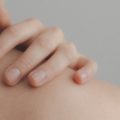While a stubble is believed to be a timeless look that never goes out of style, it has its own downsides too. Despite being easy to maintain and care of, it can give you a hard time if it gets itchy, which it does more often than you may think.
However, that’s no reason to ditch it. Instead, you can follow everything we mentioned below and the itchiness would go away and probably never trouble you again.
Why a Stubble is Typically Itchier?
New beards and stubbles are often much itchier than a longer or fully grown beard. This is because you have to shave very regularly when getting and maintaining a stubble.
When you shave or trim regularly, your short beard hair gets a sharp edge. And this sharp edge then causes friction with your hair follicles, as the hair grows after trimming. Naturally, you’d want a very good stubble trimmer to maintain the length even throughout.
Shaving is a primary cause of itchiness when growing or maintaining a stubble. In fact, it’s also one of the reasons the initial phase of growing a beard tends to be very challenging, as a new or short beard often turns itchy. Therefore, ditch the razor and use a trimmer instead.
Cleanliness is a Great First Step
Keeping your beard clean can go a long way in helping you tackle the itchiness common with a stubble. Be it a stubble or a longer beard, they all trap the dead skin cells that come off your skin, which then lead to issues like itchiness and irritation. This is especially if you have no plans to continue your stubble into grow into a longer beard.
However, dealing with this kind of itchiness is not as difficult as it might seem. In fact, simply making sure your beard remains clean throughout the day can make quite a difference.
But you need to understand that your beard hair is different than the hair on your head. It’s androgenic, which means it tends to get influenced by your testosterone levels. This calls for a more careful way of washing your beard hair.
First of all, this means that you shouldn’t be using your body soap or the shampoo you use for your head’s hair for your beard. They often cause more harm than you may think, which includes striping your beard hair of its natural oils that are essential for its health, drying out the skin underneath your beard, and of course, contributing to the itchiness.
A good beard wash can be a very effective cleaning product for your beard. However, you would need to get one with all natural ingredients, and no chemicals at all.
In fact, unless your beard has turned too itchy, simply cleaning with water may work well too. After washing your beard with water, use a good beard brush to just move it over your stubble, and make sure all the areas of your beard hair are covered. This would help get rid of the dead skin cells that may be trapped in your stubble, as well as dirt or other elements that are typically associated with an itchy beard.
Finally, after being done with this process, you need to rinse your beard with warm water. Following this simple process alone may help you eliminate your itchiness to quite an extent.
Using a Good Beard Oil Product
A beard oil is not only for longer beards, but for a stubble as well. Even a stubble needs to be moisturized, and if you don’t use a solid beard oil product, the skin underneath your stubble will struggle to be hydrated enough to support your stubble well.
If the underneath skin lacks hydration, you will find it hard to keep the dandruff, dryness, irritation, itchiness and other similar issues at bay.
A beard oil offers many advantages, with the main ones being nourishing your stubble, keeping it and the skin underneath hydrated, as well as keeping the beard in an overall healthy condition. It’s important to note that as the beard and the skin underneath it rely on each other, it’s imperative for the latter to be hydrated and healthy as well.
And daily use of a good beard oil product helps you achieve that. Apart from that, it would also make your stubble softer, which would, in turn, help lower the friction between your stubble hair and your hair follicles.
As far as using the right amount of beard oil is concerned, a few drops would be more than enough for a stubble. The perfect amount, however, would vary from one man to another.
Start with a very small amount of beard oil, and avoid using in a quantity that makes your stubble feel greasy and oily.
Conditioning Your Beard
Just like the hair on your head, your beard hair can do with some conditioning as well. However, like what we said about washing your beard, using a hair conditioner on your beard is not a good idea too.
An ideal product for conditioning your beard would be a beard balm. But again, don’t forget what we told you about avoiding products containing chemicals.
Going for one that has Argan or Jojoba as its main ingredient would be a great choice. These two ingredients are known for softening and strengthening your beard, as well as tackling dandruff, which is one of the biggest reasons most men experience itching in their beard.
Other Useful Tips
Apart from the three main steps we explained above in detail, there are also some quick tips that might help get rid of the itching in your stubble for good.
Let’s take a look at them below.
- Trim your beard when your stubble grows in an uneven way
- Use a good razor; the cheap ones tend to cause temporary irritation and itchiness, which can occasionally turn into a bigger issue
- If you experience itching right after shaving, soaking your beard area before trimming or shaving might help
- When drying your beard, don’t use a hair dryer; gently pat your beard instead using a soft towel









